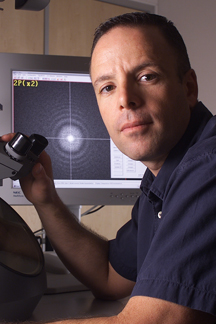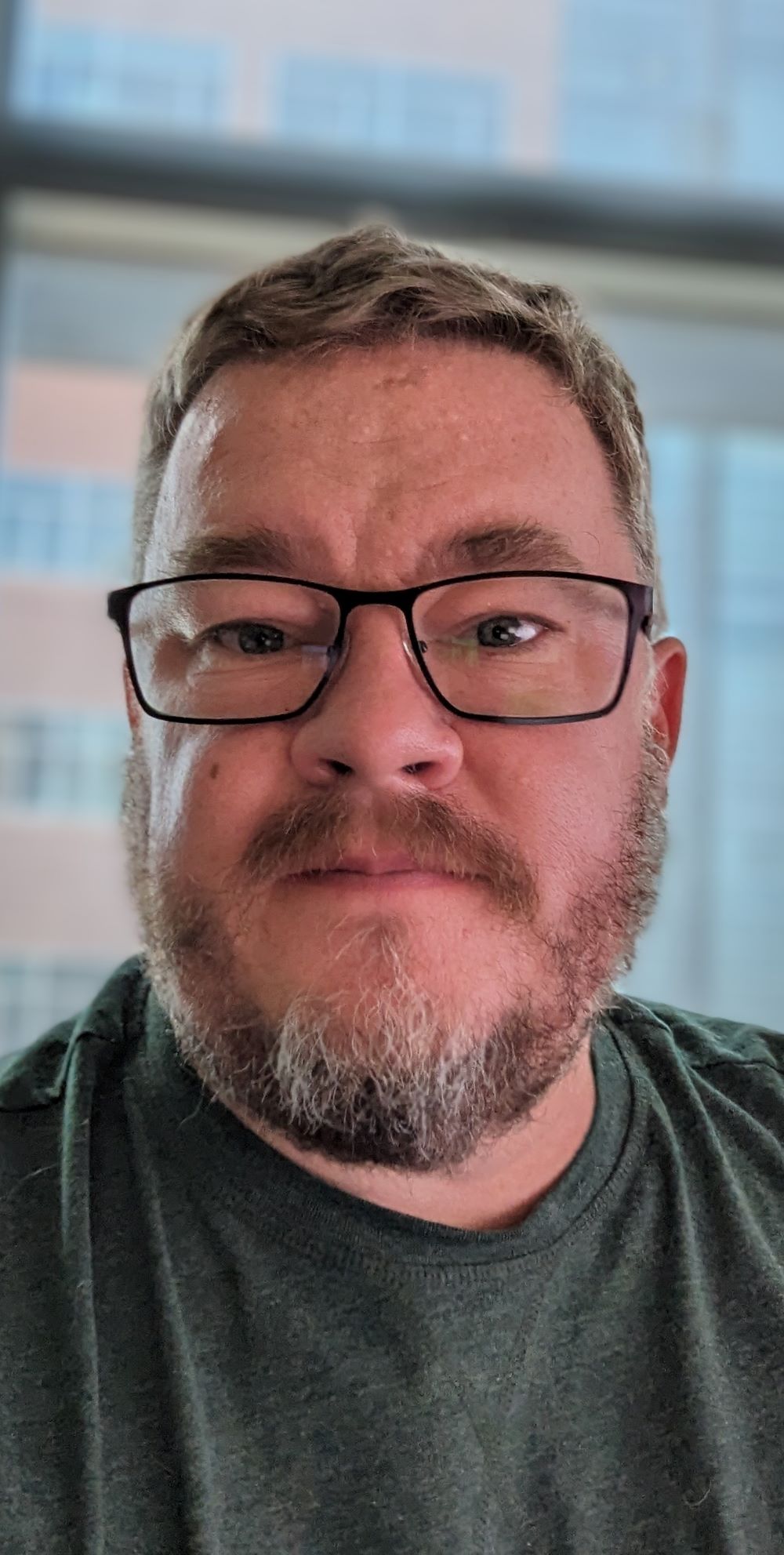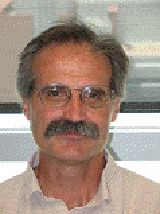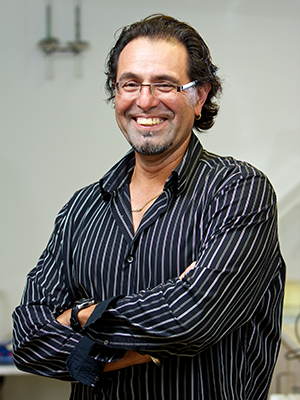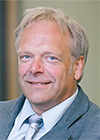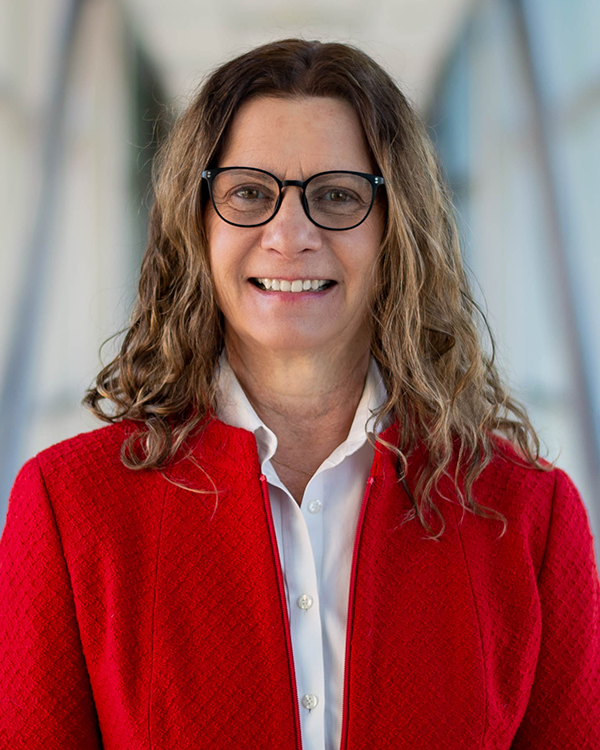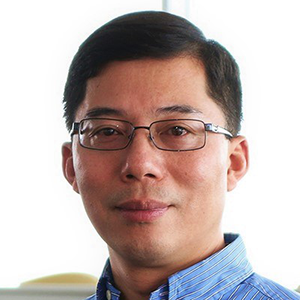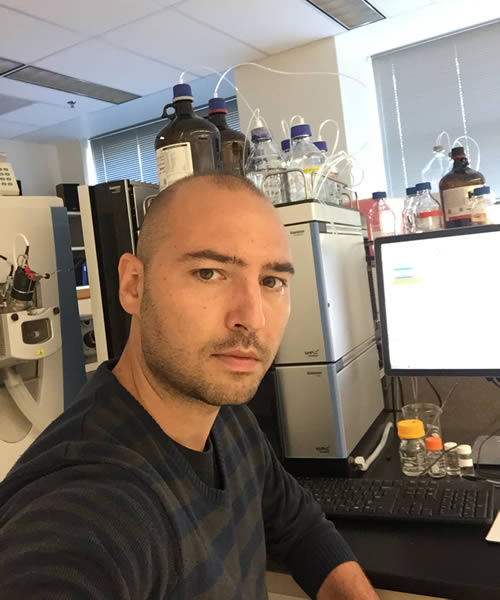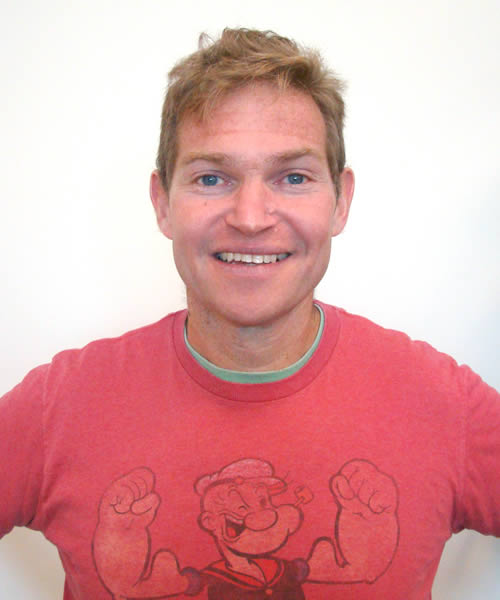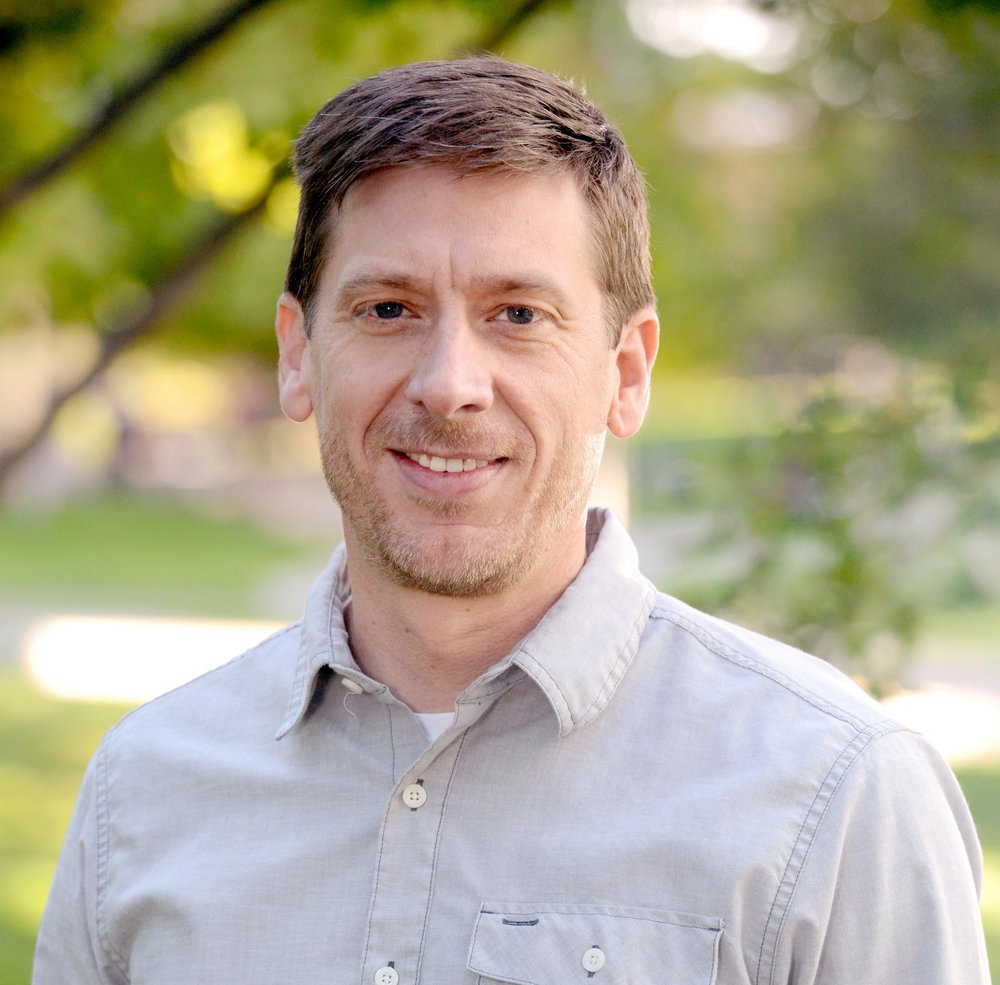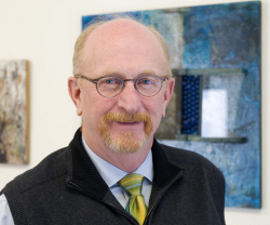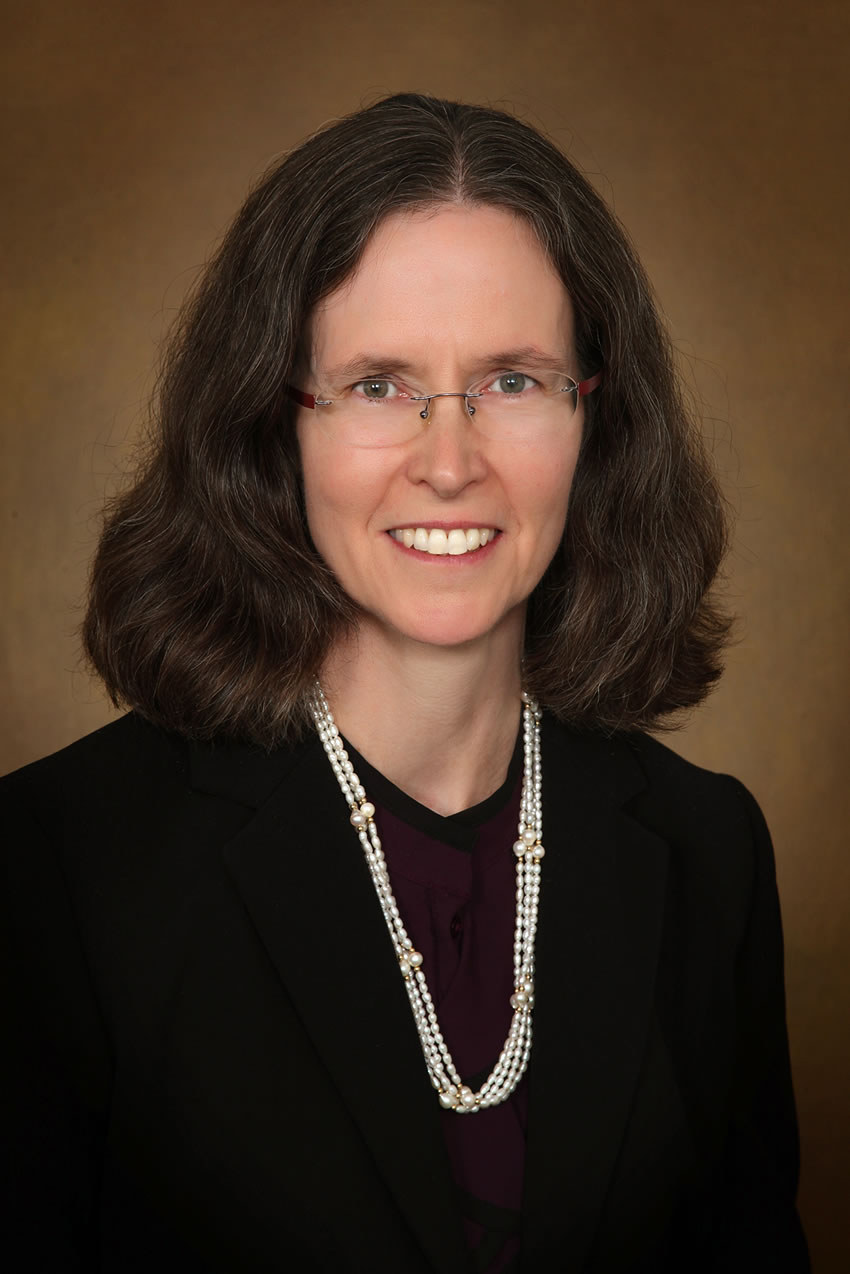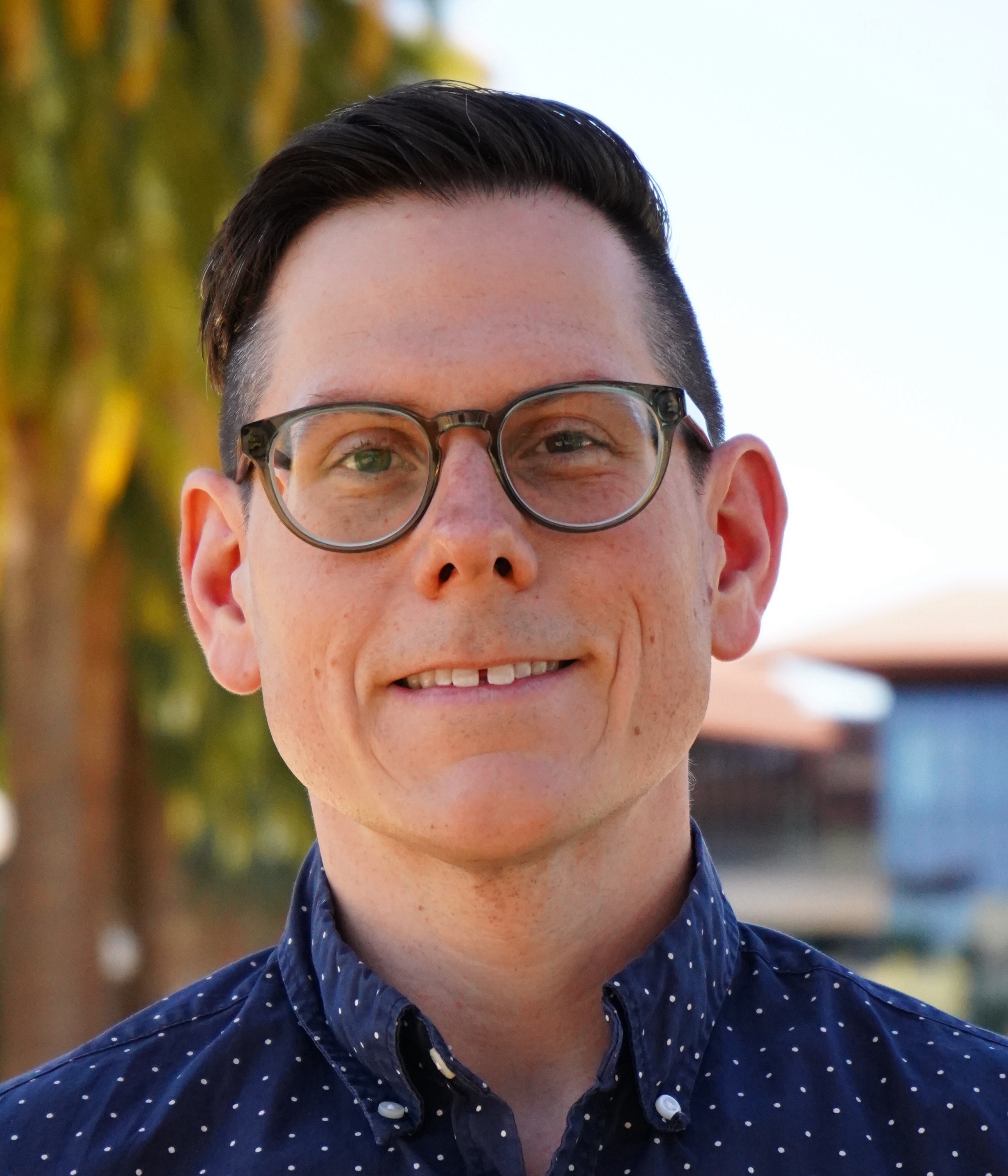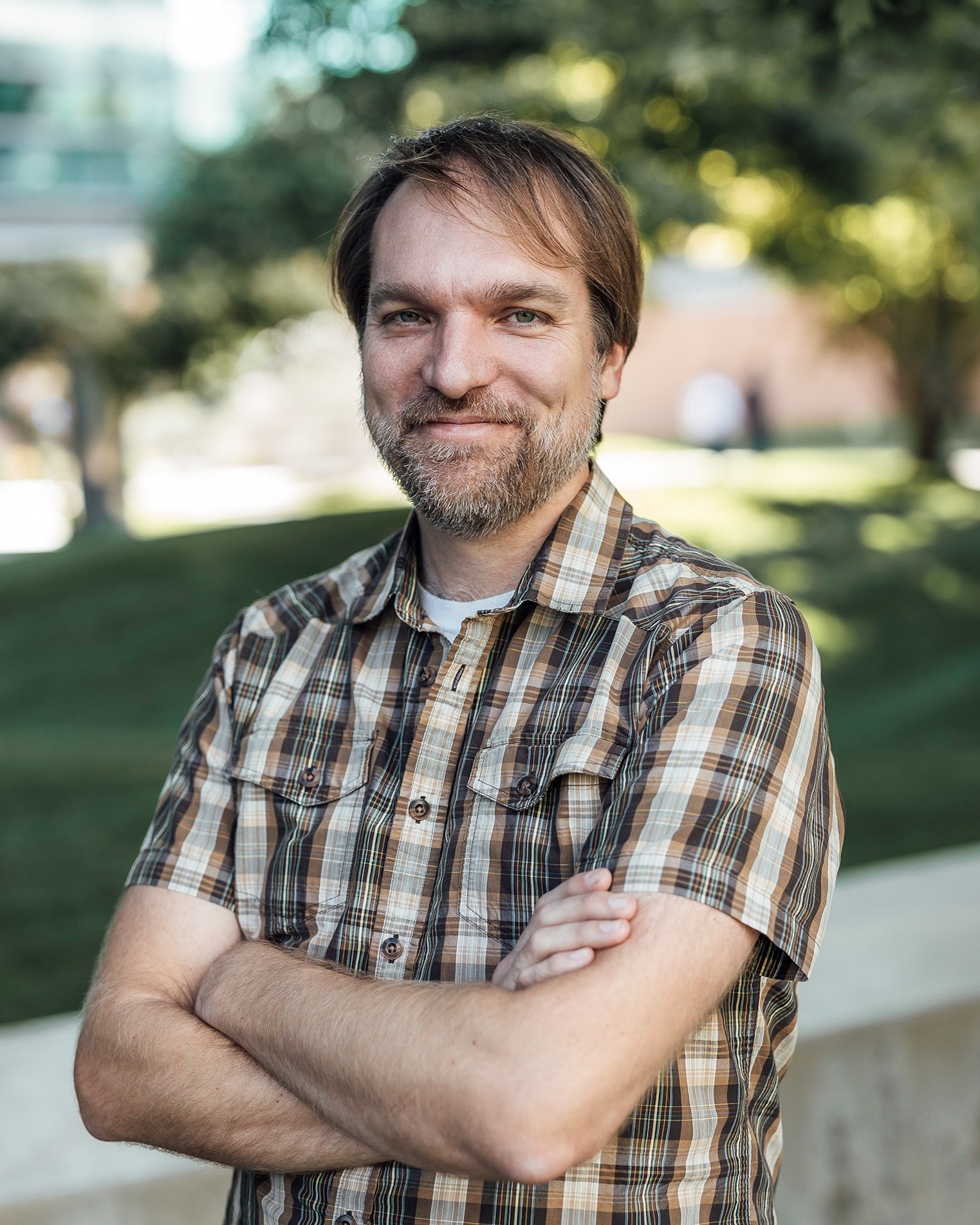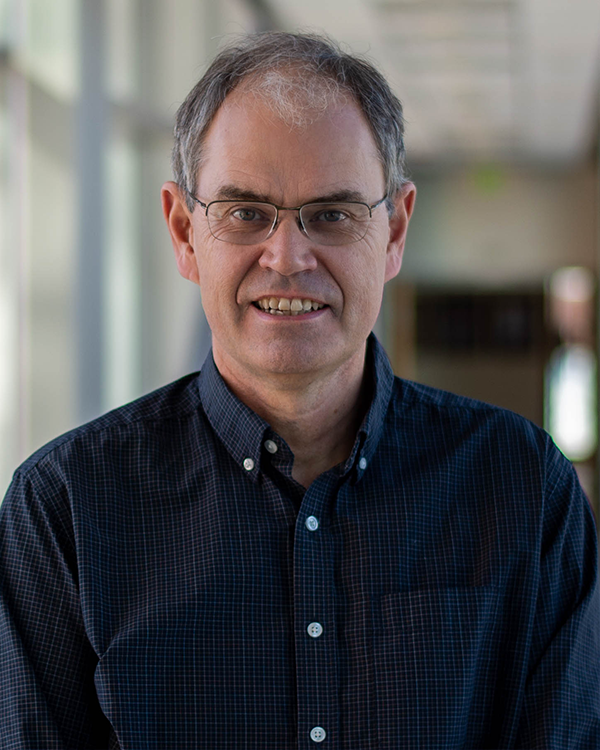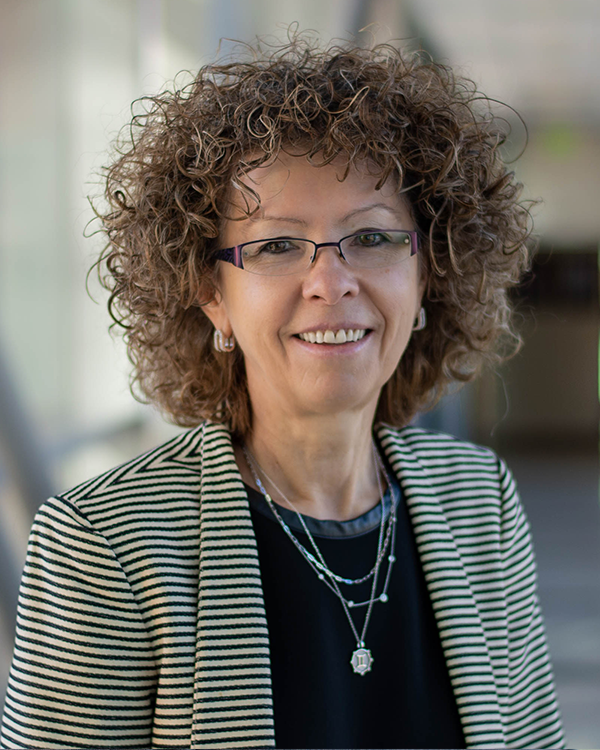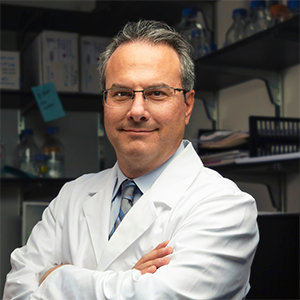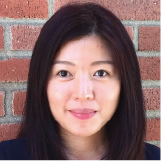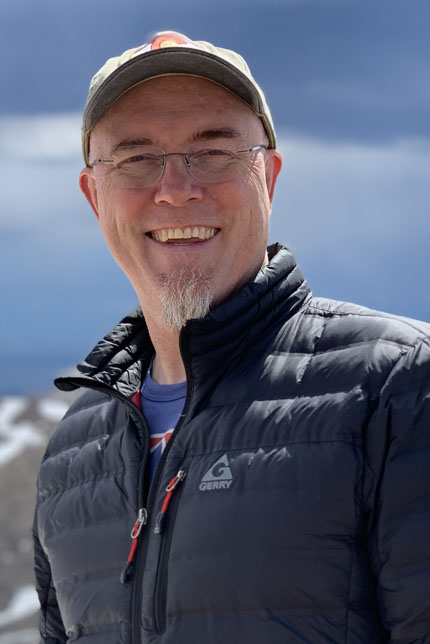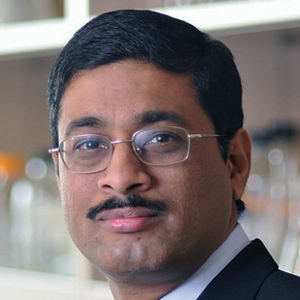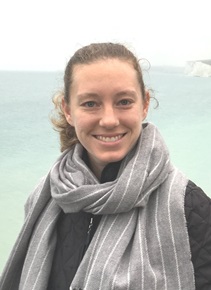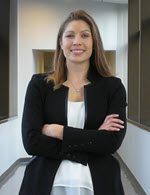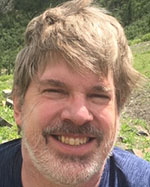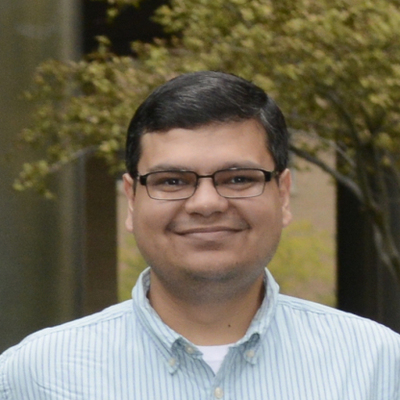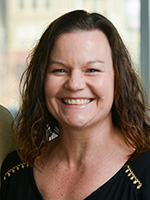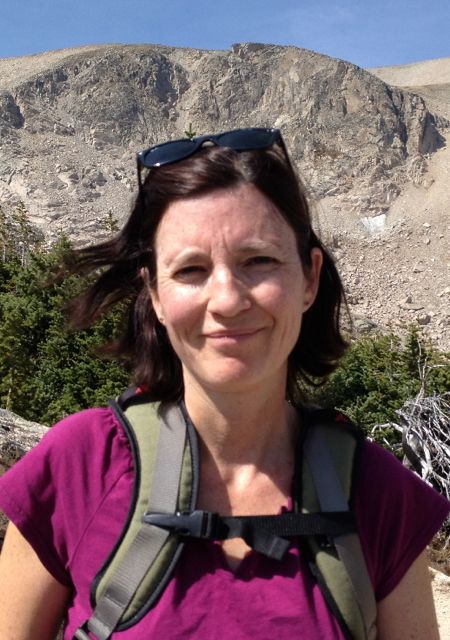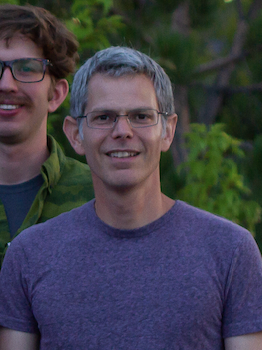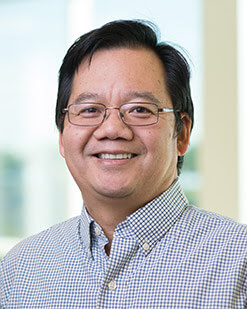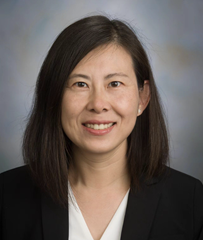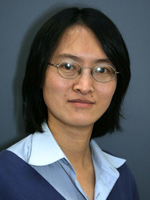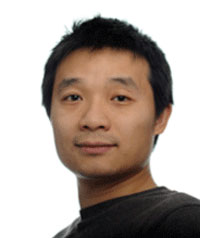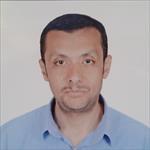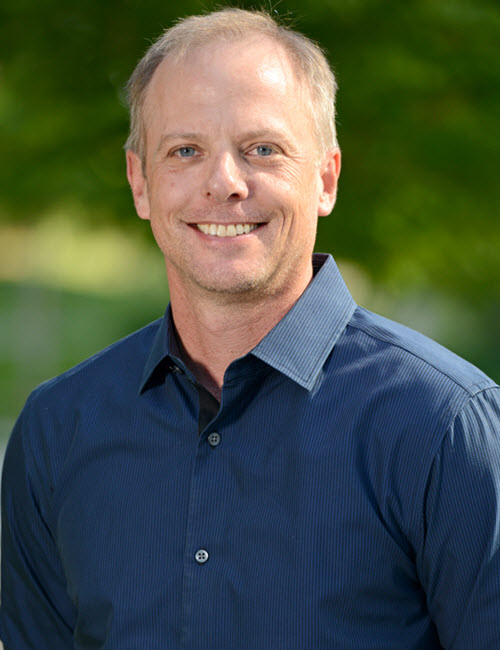FACULTY
Training Faculty
SBBB students may rotate with and join the lab of faculty who have appointments in the SBBB Graduate Program. Explore our faculty and their research below.
The Program draws on faculty from many different departments within the medical campus and offers a wide range of research opportunities. SBBB Affiliated Faculty are non-training faculty who offer a wide range of support to both our program and students.Search
Filter results by:
Francisco Asturias PhD
Professor
Despite including many different proteins, macromolecular complexes often display minimal enzymatic activity. This suggests that conformational changes and interactions are fundamental to their molecular mechanism. My group uses cryo-electron microscopy to characterize the structure, conformational states and interactions of macromolecular complexes involved in essential cellular processes. We correlate that structural information with biochemical and functional data to establish the mechanism of these remarkable cellular machines.
David Bain PhD
Professor
Our work is focused in two main areas. First, we are interested in the molecular mechanisms of transcriptional regulation using the nuclear receptor superfamily as a model system. We use a blend of biophysical, structural and cell biological approaches to dissect the various protein-DNA and protein-protein interactions critical to transcriptional activation, and then use this information to synthesize and predict overall behavior. Our second focus is on characterizing the molecular interactions of therapeutic proteins, especially at high concentrations and under formulation/delivery conditions. This work is primarily directed toward monoclonal antibodies, but we are also interested in therapeutic peptides and vaccines.
John Bankston PhD
(He/Him/His)
Associate Professor
We are interested in the molecular mechanisms of cellular excitability in the heart and brain. Our focus is on two different families of ion channels, the acid-sensing ion channels (ASICs) and hyperpolarization-activated cyclic nucleotide-modulated (HCN) channels. We study the structural and physiological mechanisms of channel function for each class of channel including how these channels are regulated by other proteins as well as the lipid membrane. To do this we use a combination of patch clamp, FRET, single-molecule fluorescence, and biochemistry.
Brad Bendiak PhD
Professor
My laboratory focuses on an understanding of the enzymes that synthesize cell surface carbohydrates, the glycosyltransferases. In addition, characterization of the carbohydrate structures themselves and development of new methods for elucidation of these molecules is ongoing.
Carlos Catalano PharmD, PhD
Professor
The studies performed in my lab fall into three broad categories that seek to understand the molecular mechanisms of virus development in the complex double-stranded DNA (dsDNA) viruses. The first project centers on the enzymology of terminase, the DNA packaging motor of bacteriophage lambda. This motor is among the most powerful known in biology; it packages the viral genome into a preformed procapsid shell to liquid crystalline density, which ultimately generates over 25 atmospheres of internal pressure. We utilize detailed enzyme kinetic, biochemical, and biophysical approaches to dissect the intimate details of motor structure and function.
Uwe Christians MD, PhD
Professor
My research interests include pharmacokinetic and pharmacodynamic therapeutic drug monitoring, clinical biochemistry, biochemical toxicology, and drug metabolism. My research has focused on the interactions between energy metabolism, mitochondrial metabolism and the mTOR pathway. This includes the toxicodynamic interactions between calcineurin and mTOR pathway inhibitors, ageing, metabolic diseases, oxidative stress, ischemia/ reperfusion injury and drug-coated coronary stents and balloons.
Mair Churchill PhD
Professor
My lab is interested in understanding the molecular basis of essential processes that regulate gene expression. We use biophysical, biochemical methods, and structural methods, including X-ray crystallography. Our insights into these fundamental mechanisms will contribute to a better understanding and ability to regulate gene expression processes involved in human diseases and will assist in drug development efforts.
Our studies focus on the following questions: (1) How is chromatin structure modulated for DNA-dependent processes? and (2) How do transcription factors and pioneering factors activate gene expression?
Shaodong Dai PhD
Associate Professor
Research interests include: (1) CAR T and engineered T cell therapies of autoimmune diseases; (2) Mechanisms of T cell mediated metal hypersensitivities; (3) Mechanisms of T cell recognition of autoantigens in Type 1 diabetes and RA; and (4) Redox signaling and drug design in the immune diseases and infectious diseases.
Angelo D'Alessandro PhD
Professor
Omics technologies, especially metabolomics and proteomics, have helped us revealing emerging patterns in systemic responses to acute or chronic hypoxia. By focusing on cancer metabolism and (red) blood cell biology, we are increasingly appreciating shared molecular mechanisms driving systemic responses to trauma/ hemorrhagic shock, I/R injury, sickle cell disease, ageing and inflammation, mammalian hibernation and pulmonary hypertension.
Elan Eisenmesser PhD
Associate Professor
The Eisenmesser lab takes a unique approach to understand protein function, and particularly enzyme function, by utilizing molecular engineering methods to control both structural interactions and the underlying movements that underlie their conformational changes. The ultimate goal of the Eisenmesser lab is to fully characterize molecular interactions at both atomic resolution and biological levels with a particular emphasis on medically relevant systems that may be exploited to either block or promote events underlying disease progression.
Kirk Hansen PhD
Professor
The extracellular matrix (ECM) provides structural scaffolding and mediates signaling in the extracellular space. According to our findings, approximately 75-85% of the fibrillar ECM resides in a chaotrope resistant insoluble ECM fraction (iECM), making proteomic characterization difficult without additional chemical digestion. We have developed optimized protocols for extraction of ECM that have been refined using samples from many systems, allowing for molecular-scale assessment of iECM proteome composition and architecture. We currently use these methods with the help of collaborators to assess ECM remodeling in pulmonary hypertension, anti-aging models, and tumor progression.
V. Michael Holers MD
Professor
Dr. Holers research group performs both basic and translational research. A longstanding interest has been to decipher the roles of complement receptors and membrane regulatory proteins in the immune response, with a special emphasis on autoimmune diseases.
Christene Huang PhD
Professor
The Huang laboratory studies transplantation immunology with a focus on developing clinically relevant protocols for the establishment of transplantation tolerance. Dr. Huang's research involves using basic immunologic approaches to develop clinically relevant strategies for regulating inflammation, overcoming transplant rejection and improving tumor immunotherapy.
John Janetzko PhD
(He/Him/His)
Assistant Professor
We study the molecular mechanisms that underpin G protein-coupled receptor (GPCR) signaling in health and disease. Using chemical and structural/biophysical approaches, including single-molecule fluorescence, mass spectrometry and cryo-electron microscopy, we aim to understanding signal transduction at the molecular level. Our work aims to connect fundamental questions in signal transduction with novel approaches to target aberrant GPCR signaling in disease.
Aaron Johnson PhD
Associate Professor;
Director, Biomedical Sciences Program
Our work focuses on the formation and regulation of chromatin domains and their ultimate roles in epigenetic genome regulation. We are particularly interested in the mechanisms of heterochromatin establishment and function.
David Jones PhD
Associate Professor
Research in my lab uses NMR spectroscopy, X-ray crystallography, molecular biology and biophysical approaches to answer the fundamental questions of how mediators of signal transduction interact with proteins of neuronal signaling pathways.
Tatiana Kutateladze PhD
Professor
My laboratory investigates molecular mechanisms of epigenetic regulation and the role of chromatin modifications in human diseases. We use high field NMR spectroscopy and X-ray crystallography to obtain atomic-resolution structures of chromatin-binding proteins and complexes involved in transcription and DNA damage repair.
Daniel Labarbera PhD
Professor
Dr. LaBarbera’s laboratory is engaged in multidisciplinary cancer drug discovery and development, including high-throughput and high-content screening (HTS/HCS); drug design and medicinal chemistry; cancer biology and lead drug mechanism of action determination, and in vitro and in vivo pharmacology.
Maggie Lam PhD
Associate Professor
Our lab is interested in developing mass spectrometry and computational methods to understand protein dynamics in health and disease. Current projects include developing multi-omics strategies to quantify protein alternative isoforms; investigating the role of ER stress and protein glycosylation in cellular stress responses; and identifying the trends and focuses of research topics in the biomedical literature.
Jed Lampe PhD
Associate Professor
The focus of research in the Lampe lab is understanding the role of drug metabolism and pharmacokinetics (DMPK) in drug efficacy within special population groups, with a particular emphasis on cytochrome P450 enzymes (CYP).
Email:jed.lampe@cuanschutz.edu
Krishna Mallela PhD
Professor
Research in the Protein Stability, Folding, and Aggregation Laboratory is currently focused on understanding the fundamental physical mechanisms of protein stability, folding, and aggregation of disease-related and model proteins. Current research projects include studying the (1) biophysics of dystrophin and utrophin, and (2) alcohol and antimicrobial preservative-induced protein aggregation. The research group utilizes various biophysical and structural techniques that include optical spectroscopy (CD, fluorescence, and absorbance) and NMR.
Michael McMurray PhD
Associate Professor
Our research focuses on identifying molecular mechanisms underlying the assembly of macromolecular complexes, with a focus on multisubunit complexes formed by septin proteins. All cellular processes require the function of multisubunit complexes, and while much attention has been given to solving the final structures of such assemblies, comparatively little is known about how individual subunits adopt oligomerization-competent conformations and find their partner subunits in the crowded, dynamic cellular milieu.
Catherine Musselman PhD
Associate Professor;
Director, Structural Biology and Biochemistry Program
Our research program addresses how chromatin regulatory proteins associate with histones in response to chromatin signaling events. We are specifically interested in how histone reader domains associate with modified histones in the chromatin relevant context of the nucleosome. We are using NMR spectroscopy along with other biophysical and structural techniques to build models of these complexes and understand how they are regulated. Results of these studies will provide insight into fundamental processes of genome regulation, the etiology of human disease, and lay the groundwork for the development of targeted therapeutics.
Travis Nemkov PhD
Associate Professor
STBB Affiliated Faculty
Dr. Nemkov is is interested in understanding the role of metabolism in blood cell development throughout the arc of life, from primitive embryonic erythropoiesis to chronic anemia of inflammation seen later in life.
David Pollock PhD
Professor
Protein, RNA, and other functional molecules that exist in living organisms are the product of millions of years of evolution. The substitutions that have occurred over the years had to have been compatible with the constraints of structure and function, and thus the evolutionary record provides critical data for understanding macromolecular structure/function/sequence relationships. In our laboratory, we use the techniques of molecular evolution, computational biology, and evolutionary genomics to exploit this record to make inferences about past biological events and to make testable predictions about the effects of mutations.
Srinivas Ramachandran PhD
Assistant Professor
We are interested in understanding how our genome packaging changes dynamically as cells change their identities and when cells respond to different stimuli. We also exploit our knowledge of how different cell types package their genome to identify disease states using protected cell free DNA fragments in our bloodstreams.
Nichole Reisdorph PhD
Professor
Research Interests include: (1) Metabolomics lipidomics and proteomics; (2) Novel informatics strategies applied to metabolomics; (3) Nutrimetabolomics; (4) Role of oxylipins in inflammatory immune and lung disease; and (5) Understanding role of host:microbiome metabolism in health and disease
Natalie Serkova PhD
Professor
STBB Affiliated Faculty
Our research interests are in developing physiologically-based imaging end-points for cancer detection and response to novel anti-cancer therapies. We are also interested in developing novel molecular probes and protocols for non-invasive imaging of inflammation proteins, oncoproteins and endogenous metabolites (so-called "molecular imaging").
Ming-Feng Tsai PhD
Assistant Professor
My research focuses on molecular mechanisms and physiological functions of transporters and ion-channels, particularly those in mitochondria. We approach questions using a wide range of tools, including membrane-biochemistry, electrophysiology, cryo-electron microscopy, animal models, and imaging.
Chandra Tucker PhD
Professor
Research in the Tucker Lab focuses on developing new tools to sense and manipulate the intracellular environment, and using these tools to understand dynamic cellular processes. A major focus is in developing ways that we can inducibly regulate and control fundamental molecular events such as protein trafficking, proteolysis, gene expression, and intracellular signaling using inducers such as light (optogenetic tools) or chemicals.
Beat Vogeli PhD
Associate Professor
We develop NMR methods and apply them together with other biophysical methods to study biologically relevant systems at atomic resolution: Diverse dynein motor adaptors and their cargos, allostery in key cell regulator Pin1, Olduvai domains involved in brain function and disease, and various RNA and DNA segments.
Gongyi Zhang PhD
Professor
Transcription regulation in immune system, B and T cell relationship, Signal transduction in immune system, Mechanism of long-lasting vaccines, Stem cells, Tumor biology, and more.
Ning Zhao PhD
Assistant Professor
My lab focuses on developing technologies that enable tracking the full life cycle of proteins in real time with high spatiotemporal resolution in their native intracellular environments. This will help us understand when, where, and how proteins are synthesized, folded, modified, and degraded in both healthy and diseased cells.
Email:ning.zhao@cuanschutz.edu
Rui Zhao PhD
Professor
Completed Mentor Training Course.
My lab studies the mechanism of pre-mRNA splicing and the role of the Six1/Eya transcriptional complex in cancer. We are also developing small molecule or RNA-based approaches to target splicing or the Six1/Eya complex as potential cancer therapeutics
Email:rui.zhao@cuanschutz.edu
Hongjin Zheng PhD
Associate Professor
The biological functions of a cell are heavily influenced by its surrounding environment. This influence is achieved mostly through membrane proteins that mediate various informational exchange between the two bodies. Thus, it is vitally important to understand how these membrane proteins function, which is the overarching goal of our research. The main tools we use in the laboratory are cryo electron microscopy and X-ray crystallography.
Affiliate Faculty
Morkos Henen PhD
Assistant Professor
My research interest focuses on applying state-of-the-art NMR techniques to study protein structure, dynamics, and drug-discovery. I'm studying variable systems that have therapeutic interests such as dynein machinery as a target for neurodegenerative diseases and PHD2 as a target for gastrointestinal diseases. We collaborate with various groups on campus and in Europe.
Quentin Vicens ScD
Assistant Professor
We explore the spatial organization of messenger RNA and how its function is modulated by proteins, small molecules and chemical modifications. We use approaches from biochemistry, molecular and cell biology, sequencing and bioinformatics. Currently faculty at UH, but still with a special appointment with the Graduate School at CU Anschutz.
